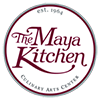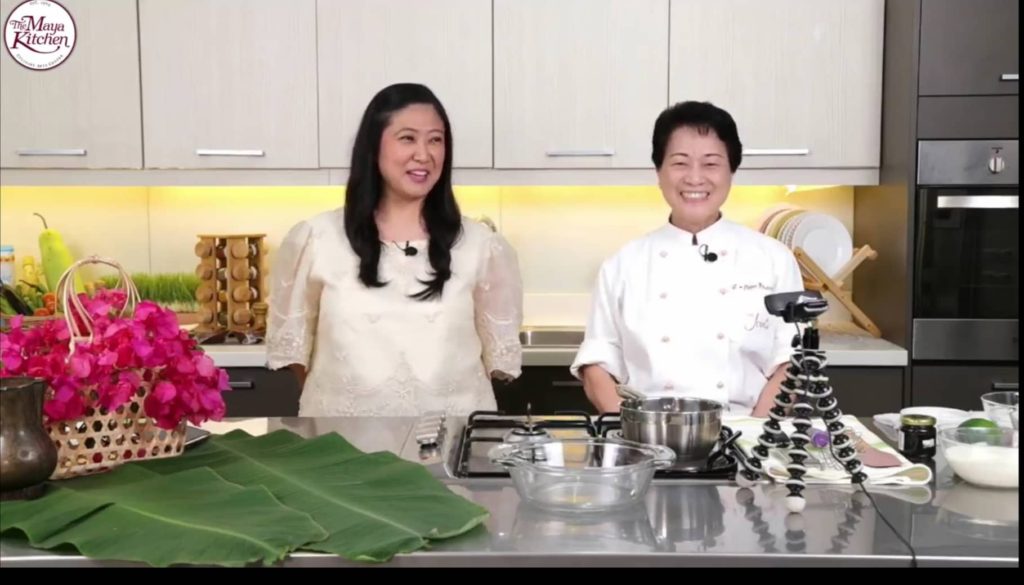Articles
Maya Kitchen Regional Cuisine: Bulakenyo Comfort Foods
The Maya Kitchen aired its first Maya Kitchen Regional Cuisine Cooking demo on its Facebook page last April 29, 2022. This demo series was conceptualized to give you a taste of Filipino cuisine by region. The pilot episode will be showcasing recipes from Bulacan to inspire home cooks like yourself to create mouthwatering Bulakenyo comfort foods for their loved ones to enjoy.
For the unaware, this region is located north of Metro Manila and known for its rich heritage cuisine. It’s also home to our panghimagas or kakanin favorites, including Sapin-Sapin and Pastillas de Leche. Not to mention its pork products, including the famed Chicharon, which originates in Sta. Maria, Bulacan.
Before we dive into a round-up of the featured dishes, here are brief backgrounds on our hosts Chef Jessie Sincioco and writer Margaux Salcedo.
About the Hosts
Chef Jessie kicked off her career in 1983 as the grand prize winner of The Great Maya Cookfest. Gifted with exceptional culinary talent, she currently operates the eponymously named restaurants Chef Jessie Rockwell Club and Chef Jessie’s place. Apart from this, she also runs a successful events and catering service. Other accomplishments include cooking for His Holiness Pope Francis during his visit to the Philippines in 2015 and the gala dinner for the 31st ASEAN Summit in 2017.
Meanwhile, Margaux Salcedo, a food and travel writer, is no stranger to the kitchen. Her discerning palate and distinctive writing style has made her one of the most respected names in local food literature, with articles featured in various publications. She’s also a publisher, book author, columnist for the Philippine Daily Inquirer, and served as the Philippines’ Country Editor for The Miele Guide and the prestigious Asian Best Restaurants Awards.
Bulakenyo Comfort Foods
Chef Jessie and Margaux will be showing viewers how to make these four delicious Bulakenyo dishes:
-
Kinilaw na Puso ng Saging
The term kinilaw refers to a Visayan food preparation method that uses vinegar to cure meat or vegetables instead of cooking it with heat. It’s similar to the Peruvian ceviche.
This delicious Bulakenyo recipe is perfect for vegetarians. It consists of banana hearts, a purplish flower that grows at the base of the fruits. Similar to artichoke in taste, this flower is rich in vitamins, including Vitamin E, potassium, fiber, and calcium, among others. Another main ingredient is sukang Paombong, a strong bulakenyo vinegar known for its tangy taste.
-
Sinampalukang Manok
According to Wikipedia, the term “sinumpalukan” means “cooked with tamarind (in Filipino, ‘sampalok’).” This hearty dish is a mainstay of the Bulakenyo table and consists of free-range chicken. Fresh tamarind shoots are used to give the broth that pleasant sourness that is the hallmark of a good Sinampalukang Manok.
-
Inihaw na Bangus Belly
Bulakenyo cuisine is known for its use of traditional cooking methods. For this dish, Chef Jessie and Margaux will be using fresh bangus filled with choice vegetables, then wrapped in banana leaf and cooked over hot coals. This method gives it a distinct smokey flavor.
-
Leche Flan with Dayap
Finally, there’s leche flan, a custard topped with caramel. It’s a dessert that no sweet tooth can resist. While leche flan is a common dessert across the country, this Bulakenyo version incorporates home-grown dayap, balancing out the sweetness with tartness. It’s a citrus fruit known in other countries as key lime.

